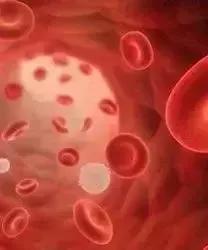Article
Daratumumab Plus RVd Demonstrates Sustained Improvements in Response in Newly Diagnosed Multiple Myeloma
Author(s):
The addition of daratumumab to lenalidomide, bortezomib, and dexamethasone continued to elicit improved outcomes vs RVd alone in patients with newly diagnosed, transplant-eligible multiple myeloma, according to findings from the extended 2-year follow-up analysis of the phase 2 GRIFFIN trial.

The addition of daratumumab (Darzalex) to lenalidomide (Revlimid), bortezomib (Velcade), and dexamethasone (D-RVd) continued to elicit improved outcomes vs RVd alone in patients with newly diagnosed, transplant-eligible multiple myeloma, according to findings from the extended 2-year follow-up analysis of the phase 2 GRIFFIN trial (NCT02874742) that were presented during the 2021 ASH Annual Meeting and Exposition.1
After a median follow-up of 38.6 months, investigators reported a stringent complete response (sCR) rate of 66.0% for patients who received the quadruplet therapy vs 47.4% in patients who received the triplet therapy (P = .0096). Investigators also reported that in the intent-to-treat (ITT) population, the minimal residual disease (MRD)-negativity rate, at a threshold of 10-5, was 64 % in patients treated with the quadruplet therapy vs 30 % in patients treated with the triplet therapy (P < .0001).
Although the study was not powered to determine progression-free survival (PFS), at 36 months, the PFS rate trended toward favoring D-VRd compared with VRd alone (88.9% vs 81.2%, respectively). Median PFS was not reached for either group.
“The separation of the PFS rates begins beyond 1 year of maintenance and suggests a benefit of prolonged daratumumab and lenalidomide therapy,” Jacob Laubach, MD, MPP, clinical director of the Jerome Lipper Multiple Myeloma Center and senior physician at Dana-Farber Cancer Institute, and an assistant professor of medicine at Harvard Medical School, said during a presentation of the data.
In the primary analysis of GRIFFIN, D-RVd demonstrated an improved sCR by the end of post-ASCT consolidation compared with RVd alone (42.4% vs 32.0%, respectively; P = .068).2 Additional follow-up at a median of 27.4 months, showed responses continuing to deepen and favored the daratumumab group vs the RVd group alone (63.6% vs 47.4%; P = 0.253).3
Regarding demographics and clinical characteristics, treatment arms were well balanced. The median ages reported were 59 years (range, 29-70) in the D-RVd group (n = 104) and 61 years (range, 40-70) for the RVd group (n = 103), and 27% were over 65 years of age across both groups. ECOG performance scores, baseline creatinine clearance, and International Staging System (ISS) disease stage were all similar across the treatment groups. Cytogenetic and revised cytogenetic risk profiles were also similar across groups.
At clinical cutoff, investigators reported that all patients either completed 2 years of maintenance therapy or discontinued study treatment.
“A similar proportion of D-RVd and RVd patients discontinued during the daratumumab/lenalidomide or lenalidomide maintenance period,” Laubach said. Reasons for discontinuation during the maintenance period included adverse events, which were balanced between the 2 arms. Laubach noted that more patients who received RVd with lenalidomide maintenance discontinued because of progressive disease.
Over time, response rates for sCR and CR or better were greater for patients in the D-RVd group vs RVd group at all time points, with the deepest responses occurring after 2 years of maintenance therapy. “At last follow-up, rates of complete response or better were 82% for D-RVd vs 61% for RVd,” Laubach said.
When a threshold of 10-6 was used to measure MRD-negativity, rates favored D-RVd vs RVd in the ITT population, 36% vs 15%, respectively (P = .0007). Patients in the D-RVd group also had a favorable complete response or better, 43% vs 22%, respectively (P = .0121).
At both thresholds, MRD-negativity rates were improved for the D-RVd group vs the RVd group at all timepoints with the most notable improvements occurring for MRD-negativity rates at the 10-6 threshold during the first and second years of maintenance therapy.
“In the D-RVd group, 29% of patients who were MRD-positive at the end of consolidation became MRD-negative at 10-5 after 2 years of maintenance compared with 12% for RVd, suggesting that adding daratumumab and lenalidomide in maintenance may help achieve MRD-negativity,” Laubach said.
Rates of durable MRD-negativity lasting over 6 months or over 12 months were improved patients who received D-RVd compared with RVd. At over 12 months, D-RVd sustained MRD-negativity was 44% compared with 13% for the RVd group.
Regarding safety, higher rates of neutropenia and upper respiratory tract infections were seen in patients treated with D-RVd vs RVd but did not lead to increased rates of treatment discontinuation. Additionally, with the longer follow-up, no new safety concerns were identified. The most common infections, specifically any grade or grade 3/4 infections, occurring in over 5% of patients, were similar for both groups.
“These findings support D-RVd as induction, followed by autologous transplant, daratumumab plus RVd post-transplant consolidation, and daratumumab and lenalidomide maintenance as an effective strategy for patients with transplant-eligible NDMM,” Laubach said. “These data support the phase 3 PERSEUS study [NCT03710603],4 which evaluates D-RVd followed by daratumumab and lenalidomide maintenance therapy compared with RVd followed by lenalidomide alone in transplant-eligible NDMM,” Laubach concluded.
References
- Laubach JP, Kaufman JL, Sborov DW, et al. Daratumumab (DARA) plus lenalidomide, bortezomib, and dexamethasone (RVd) in patients (pts) with transplant-eligible newly diagnosed multiple myeloma (ndmm): updated analysis of GRIFFIN after 24 months of maintenance. Presented at: 2021 ASH Annual Meeting and Exposition; December 11-14, 2021; Atlanta, GA. Abstract 79.
- Voorhees PM, Kaufman JL, Laubach J, et al. Daratumumab, lenalidomide, bortezomib, and dexamethasone for transplant-eligible newly diagnosed multiple myeloma: the GRIFFIN trial. Blood. 2020;136(8):936-945. doi:10.1182/blood.2020005288
- Kaufman JL, Dimopoulos MA, White D, et al. Daratumumab, lenalidomide, and dexamethasone in relapsed/refractory myeloma: a cytogenetic subgroup analysis of POLLUX. Blood Cancer J. 2020;10(11):111. doi:10.1038/s41408-020-00375-2
- Sonneveld P, Broijl A, Gay F, et al. Bortezomib, lenalidomide, and dexamethasone (VRd) ± daratumumab (DARA) in patients (pts) with transplant-eligible (TE) newly diagnosed multiple myeloma (NDMM): A multicenter, randomized, phase III study (PERSEUS). J Clin Oncol. 2019;37 (suppl; abstr TPS8055). doi: 10.1200/JCO.2019.37.15_suppl.TPS8055






%20(2)%201-Recovered-Recovered-Recovered-Recovered-Recovered.jpg?fit=crop&auto=format)

%20(2)%201-Recovered-Recovered-Recovered-Recovered-Recovered.jpg?fit=crop&auto=format)
%20(2)%201-Recovered-Recovered-Recovered-Recovered-Recovered.jpg?fit=crop&auto=format)